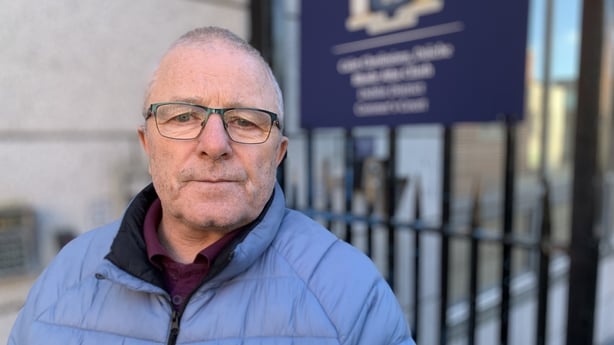The Stardust inquests have heard that the garda in charge of the investigation said there was no evidence from the over 1,500 statements taken which indicated the fire was malicious.
John Courtney was a Detective Superintendent at the time and oversaw the garda investigation which lasted "a number of weeks".
Extracts from the evidence he gave to the 1981 Keane Tribunal and statements he provided to gardaí after the fire were read into the record today.
In the early hours of St Valentine's Day 42 years ago, a fire swept through the Stardust nightclub in Artane Co Dublin, killing 48 people.
Fresh inquests into their deaths, which began last April, are being held in Pillar Room on the grounds of the Rotunda Hospital.
This is day 91 of the hearings.
The inquests heard that a total of 1,649 statements were taken by officers and that 89 gardaí were directly involved in the investigation at the outset.
That number did not include experts attached to the Garda Technical Bureau.
The Dublin District Coroner’s Court heard that there were 841 people in the club at the time.
Det Supt John Courtney told the 1981 Keane Tribunal into the fire that gardaí had interviewed all of the people who were in the curtained off area, known as the west alcove, where the fire was spotted inside the ballroom.
He told the tribunal that "no evidence came to light that they might be involved".
The court heard how he also told the tribunal that "from the 1,649 statements taken, no evidence came to light which would indicate that the fire was malicious".
Earlier, a survivor who escaped the blaze told the hearings that his friend who died must have made it "very close" to an exit.
Douglas Doyle, who was 17 years old at the time, spoke of how he had gone to the club that night with his friend Eamonn Loughman, who was 18 and from Beaumont.

Mr Doyle described how they were sitting in the north alcove and how Eamonn first alerted him to the fire. He said, initially, they were not concerned and remained in their seats.
"It looked like the back of the chair was on fire. I thought it looked quite small. We didn’t feel threatened by it," he told the proceedings.
When they saw the "thick black smoke" moving across the ceiling, they decided to leave.
He recalled how they ran down on the tops of the tables towards exit five. He then fell, and could not see anything, as the lights had gone out.
"It was completely dark," he said.
"I couldn't hear anything, I couldn't see anything," he said.
Mr Doyle said he lost sight of Eamonn and assumed he had gotten out because he was ahead of him as they made for the doors.
"At most he would have been two yards ahead of me … he would have been very close to the exit."
He said he felt someone in front of him and put his hand on the person's shoulders and that seconds later he fell out of exit five.
"By the grace of God, I just fell out of the door. I was very lucky," Mr Doyle said.
He said he looked back in and "the entire building was on fire at that stage".
Mr Doyle said he was one of the last to leave through that exit, "if not the last".
The court heard how Mr Loughman's remains were not formally identified until 2007
Mr Doyle also described seeing a girl, around 15 feet inside, lying on the floor. He said she was "struggling" and "kicking".
He said her clothes "disappeared" and then "she stopped".
Fire exits 'inspected'
The inquests also heard how a garda inspected the emergency exits after the fire and found chains locked with padlocks hanging off the panic bars of the exit doors.
The statements of William Ronayne, a detective inspector at the time, were read into the record.
Mr Ronayne described how at around 3.30am, after the fire had been extinguished, he inspected the fire exits.
On exit one, he saw a "chain with both ends locked together with a padlock" hanging on the panic bars on the right half of the doors.
He recorded the same for exits three, four and five. Exit two was the main entrance and the court heard how Mr Ronayne did not inspect exit six.
Detective Inspector Ronayne also detailed the damage to the exits.
He said that the "panic bolt" was missing from the left half of exit three’s door and that the left door at exit four was in a "closed position". The panic bar was also missing on the left-hand side.
Regarding exit five, both doors were fire damaged and the panic bar was missing from the door on the left.
Taxi driver saw '30-foot flames'
The inquests then heard how a taxi driver told gardaí in 1981 that he saw "30-foot flames" rising out the nightclub while everyone was still inside.
Robert O’Callaghan was a taxi driver at the time of the fire and gave a statement to gardaí four days after the disaster.
He told officers that at around 1.35am or 1.40am on the morning in question, he was on Beaumont Road and "noticed flames rising from the roof of the Stardust."
In his garda statement, which was read into the record today, he said: "These flames were about 30 feet high."
The court heard how he got out of his car and approached the main entrance.
"At this stage, there was nobody outside the building," Mr O'Callaghan said.
"I was about to knock on the front door when it was opened, and people came casually walking out with their drinks in their hands," he added.
He said he told them the place was on fire and someone answered that they knew and that they were being evacuated.
"About a minute later, a few girls came out screaming,’" he said.







